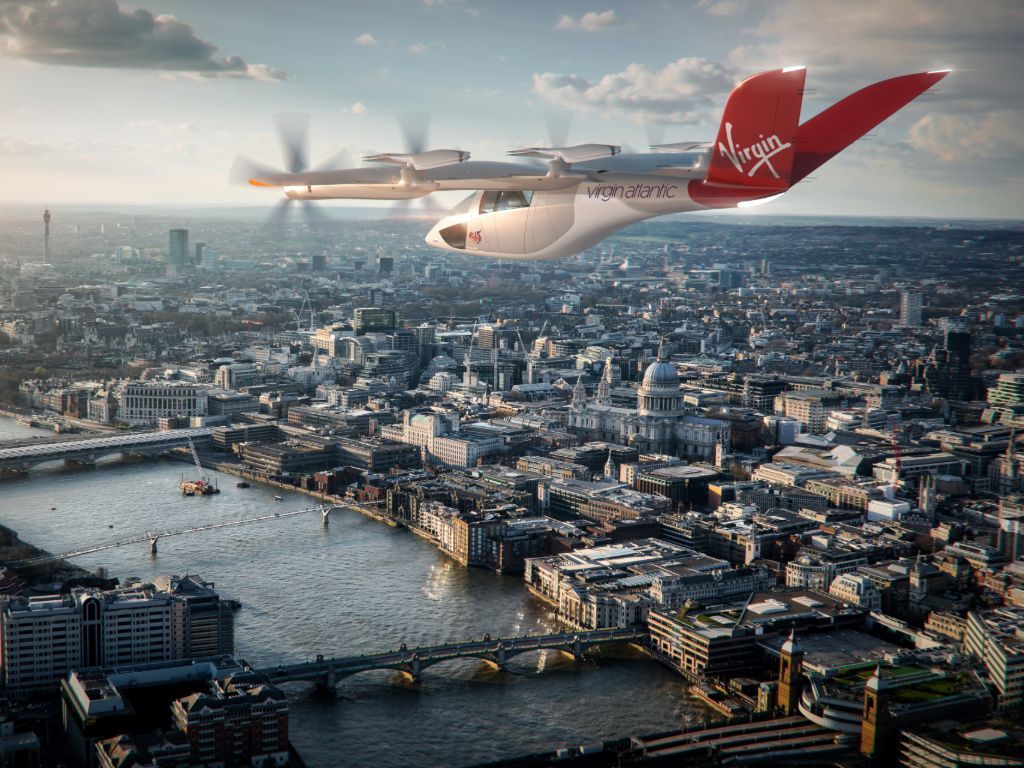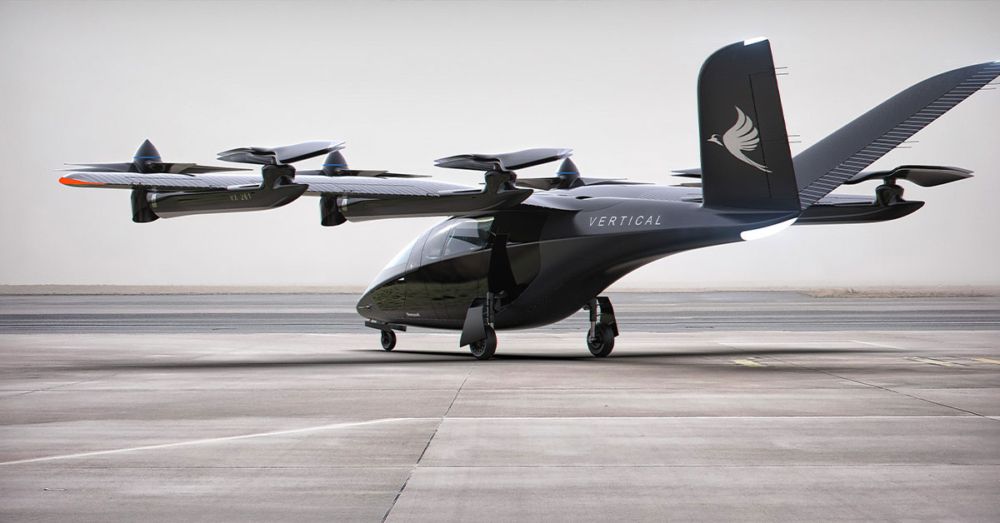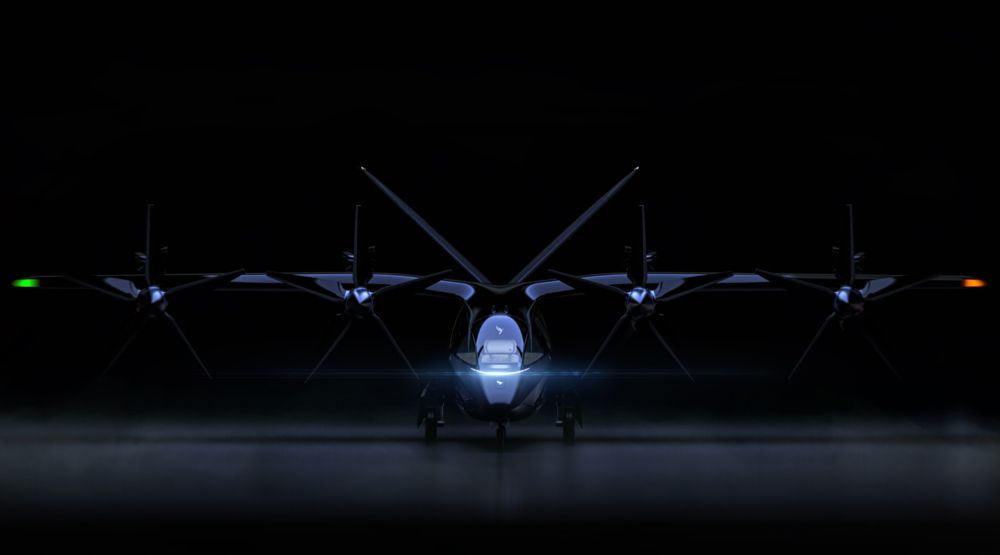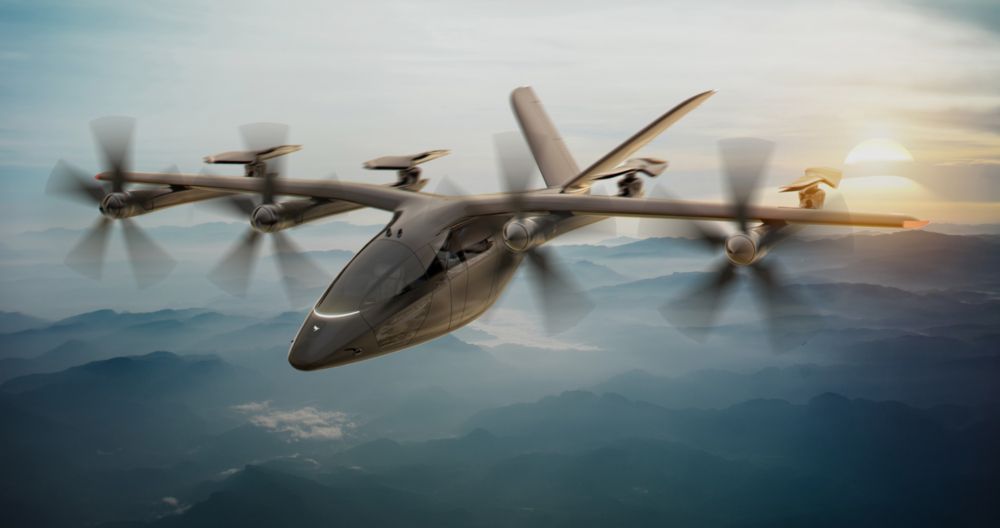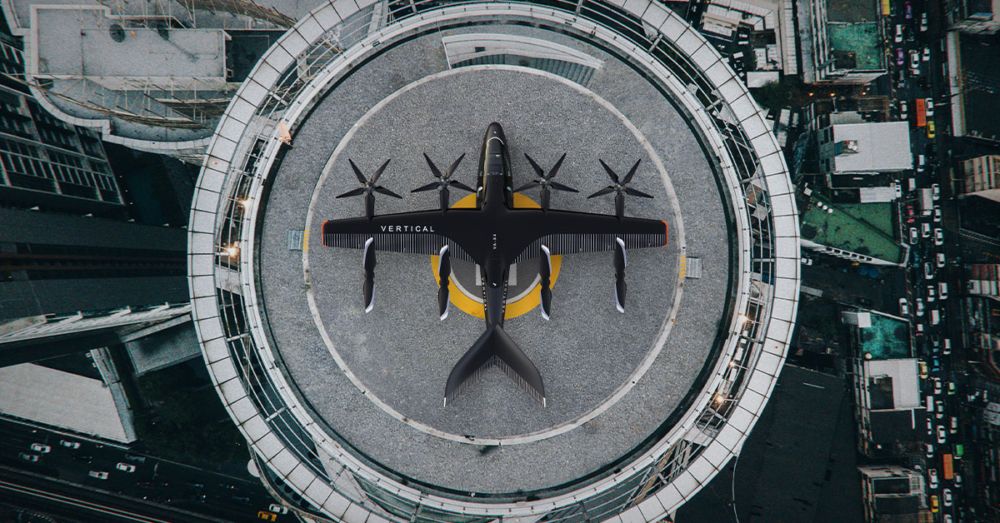We recently shared that a network of vertiports could soon be introduced in the United Kingdom. This initiative would bring a new form of zero-carbon travel to the country. With COP26 now finished and plenty of lessons learned, we thought we'd look at how those behind the vertiport program are looking to achieve their ambitious targets.
The right aircraft
The 25-vertiport network is set to optimize sustainable connectivity within the UK. Ferrovial, a Spanish multinational infrastructure powerhouse, and Vertical Aerospace, a British startup looking to launch the first commercial flying taxis in 2024, recently confirmed a partnership to implement the network. While Ferrovial will focus on the infrastructure side, Vertical Aerospace is working on an electric vertical take-off and landing (eVTOL) aircraft called VA-X4 to complement the system.
VA-X4 is set to bring speeds of over 200 mph (320 km/h) and bring quietness that is multiplied by 100 when compared to a helicopter at cruise. It holds a 1MW+ powertrain and can offer a range of over 100 miles (160 km).
The company hopes to cut inter-city travel times and open up new pathways with its aircraft. For instance, many travelers take a tedious and expensive taxi or train journey to their nearest airport, which could take hours to complete. Taking London Heathrow as an example, the car journey to Cambridge can take an hour and a half to complete. However, a hop on the VA-X4 would only take 28 minutes.
Simple Flying caught up with Vertical Aerospace’s director of infrastructure, Andrew Macmillan, about the strategy in achieving this net-zero ecosystem. He went over the steps that have to be completed in order to get advanced mobility going as a commercial service.
Certification journey
Initially, the aircraft needs to be certified as safe and ready to fly. Vertical Aerospace is convinced that people will expect them to be as safe as a commercial jet such as an Airbus A380 or Boeing 787. This is the standard that the likes of the CAA and EASA will be certifying to.
In order to reach this level, the company needs to raise money to deliver the certification program. There was a recent cash boost amid a $205 million investment from Mudrick Capital, which is helping to get the ball rolling in this aspect. The firm is also planning to go public, which is another step toward raising the money required to get a certified aircraft.
Scaling production
The step after is to manufacture the aircraft at scale. With Vertical already teaming up with integral figures in the industry, the company is confident with its approach here.
“Vertical has teamed up with a number of key players in aerospace to both develop the technology and then to build it. We think that this helps because it means that large parts of the aircraft are ready. For example, the powertrain is a Rolls-Royce unit. The avionics is a Honeywell system that flies today. GKN is engaged in the wings and the fuselage. Overall, we're using the very best of global and British aerospace to put together a plane where much of it already works,” Macmillan told Simple Flying.
“We will need to then scale up to production and scale. There'll be facilities we'll be needing to build in the UK and potentially elsewhere, and we have to start producing them. We've already had conditional pre-orders for 1,350 aircraft around the world. That's pretty much the first two and a half / three years of our production already pre-ordered.”
Stay informed: Sign up for our daily and weekly aviation news digests.
Entry to service
The next challenge is introducing the aircraft into commercial service. Future operators include Virgin Atlantic, American Airlines, JAL, Bristow Group, Gol, Marubeni, and Iberojet. These carriers will be key in the implementation process.
Vertical Aerospace expects the VA-X4 to be operating at Heathrow by the middle of this decade. There are prospects of transporting passengers to the center of London in just 12 minutes with the aircraft. Thus, the final step of the introduction process is ensuring that airports and construction outfits have considered all the necessary factors with the complex nature of launching such a system.
“We need the likes of Heathrow and Ferrovial to offer the ground infrastructure in places to land. It's also really important, particularly in places like Southeast England with complicated aerospace, that we have aerospace management that works. We've got to have routes to fly these planes that have the capacity to operate,” Macmillan added.
“Part of all that is making sure that people on the ground are enthusiastic about these new aircraft too. There's often talk of things like social acceptance. I think it's actually about wanting to get to social enthusiasm and social support for a new form of transport. People's concerns around the flying have to be addressed. We want them to see the real positives in this, noting zero emissions, quietness, and a fantastic new way of connecting.”
All change
Overall, the UK government has ambitions to reach net-zero goals by 2050. This mission is something shared by stakeholders across the broader aviation industry. With these grand targets, we can expect a new look travel ecosystem by the time this decade is over.
What are your thoughts about the introduction of vertiports? What do you make of the aircraft complementing the structure? Let us know what you think of the prospects of the network and the VA-X4 eVTOL in the comment section.

